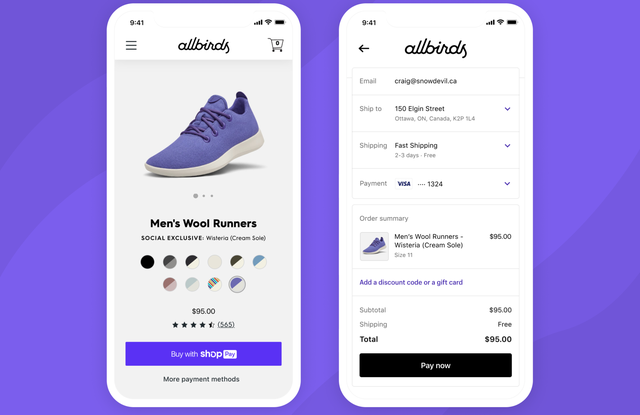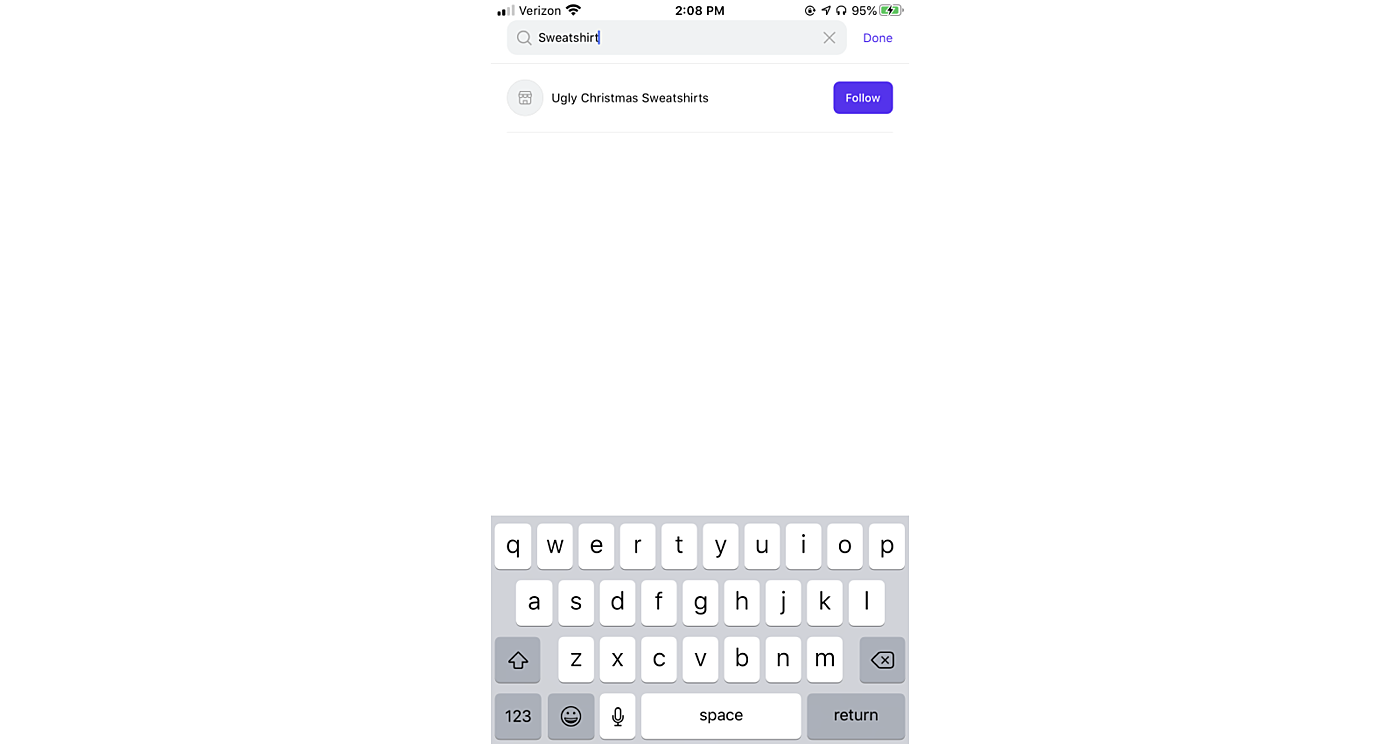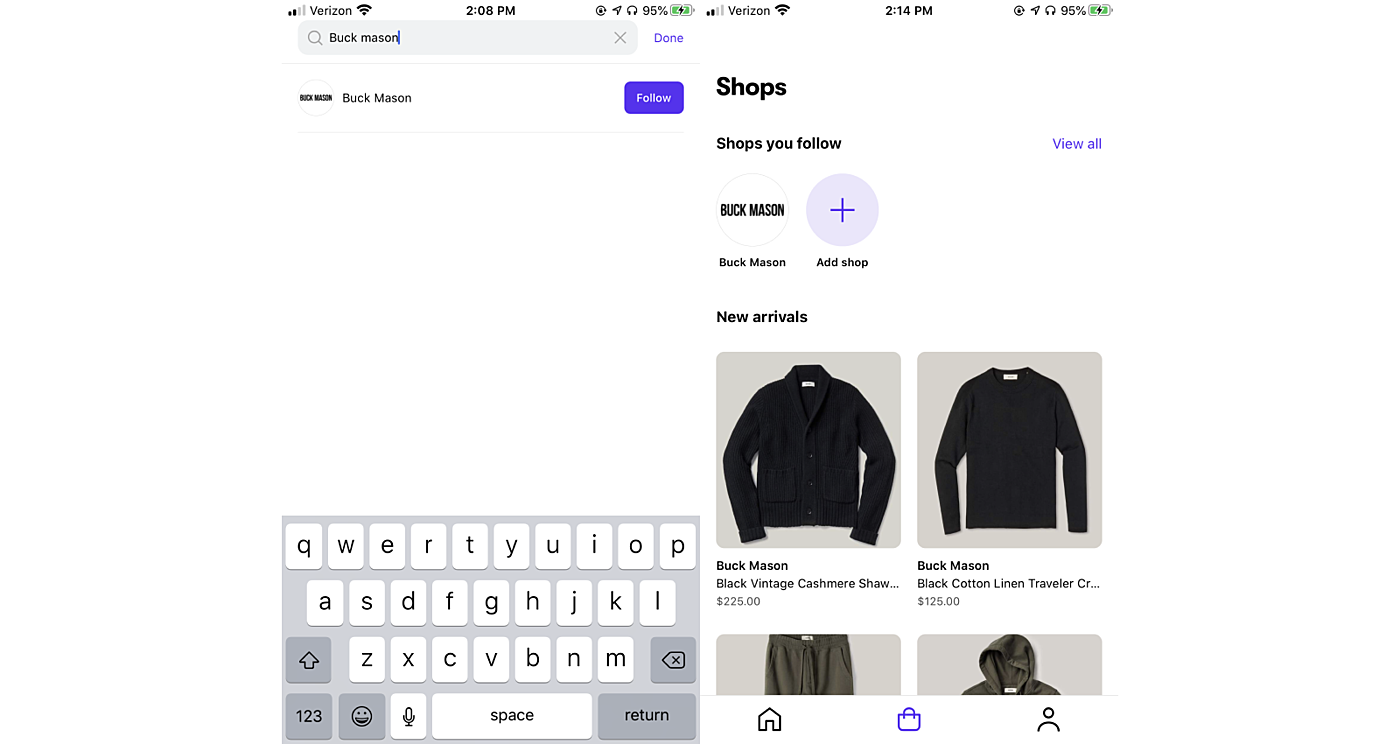
Put yourself in the shoes of a brand new ecommerce startup. Where do you get your first customer? How about your first thousand?
Your first idea might be: “buy ads?” But this is getting harder. As advertising consolidates, both paid and organic customer acquisition costs (CAC) have been increasing. Facebook ads can be effective, but not at any price. Many DTC brands aren’t operating in categories where they can afford to spend $50+ to acquire a customer.
Okay, so maybe it’s hard to use ads to buy new customers, but what about getting people who’ve already bought from you to buy again? This should be easy, because happy customers often want advertising from their favorite brands, it’s just a matter of seeing the ad at the right time. But where can you do it?
Email is good, but not great. It’s good because you check it often, it’s not great because you go there to respond to your boss or read a newsletter. If you think “I’d like to go shopping today,” you don’t take a trip to your inbox.
This week, sensing an opportunity to solve these problems for merchants, Shopify launched a new app called Shop, which aims to improve product discovery. The app allows you to browse through a feed of recommended DTC products and easily purchase them using the Shopify one-click Shop Pay checkout.
Shopify will collect data from customers browsing on the app, and can leverage this new data to offer highly-tailored recommendations to customers. It’s like a digital mall — a way to browse products and wander through stores, but online.
One interesting thing: Shop actually isn’t a new app. It’s an update and rebranding of an existing Shopify package-tracking app called Arrive, which is already used by 16 million consumers. Building off an existing app is a neat hack to get their first users in the door, but it goes deeper than that. By integrating with delivery tracking, Shop has a natural mechanism to drive customers back to the app: notifications about when their packages are being delivered. (An opportune moment to sell you the next thing!)
So, will Shop work?
In theory, a digital mall should exist. Amazon is great for explicit queries, but we need a place to discover the thousands of quality brands that aren’t on Amazon. If I want a cool new backpack from a DTC company, where can I go to browse around? I guess Instagram is the best option, but unfortunately for brands, it’s also chock full of other distractions.
So, something like Shop makes sense in theory, but is Shopify the right company to build it? There are two major risks: getting consumers to use the app, and upsetting merchant partners.
The first risk is that Shopify might not even be able to build a successful consumer app. This is a substantially different skill than B2B software, and to be honest, the initial Shop product experience left a few things to be desired.
For example, on-boarding was a bit rough. If you type in “sweatshirt” to the search, it returns companies that have “sweatshirt” in the title instead of, y’know, sweatshirts.
To get a list of sweatshirts, I first have to search for specific brands and follow them. Then and only then will their products appear in my discovery feed.
This needs to improve if consumers are actually going to use this app. And with time, it inevitably will improve. But making an app that people consistently use is a hard problem for any company, particularly for one that has previously only sold products and services to businesses.
But this is where we get to the deeper tradeoffs that may hamstring Shopify. Let’s give the Shop designers credit, and assume they already know when you search “sweatshirt” you want to see products, not stores. It’s possible that these features weren’t design flaws and instead were intentional. What if they rolled out a not-so-great Shop as a “soft launch” to avoid rocking the boat with their merchants?
I know, you’re probably thinking, “What possible incentive would Shopify have to do that?” Well, consider this: If they had allowed consumers to search for products, they would’ve had to write an algorithm to decide which brands appeared at the top of the feed. How would they prioritize the recommended products? How do you balance the needs of customers and merchants, which are inherently in conflict with each other?
It’s tough. This is a new muscle for Shopify to use, and they would be rational to sacrifice the new thing in order to avoid creating new risks in their existing business.
Which leads me to the second risk with Shop: the potential that Shopify tarnishes their relationship with merchants.
Historically, Shopify has been hyper-focused on the merchant side of the commerce relationship. They began as a website builder and quickly became an ecommerce platform, building out the rest of their ecosystem through third-party fulfillment, solutions for the mid-market, and small business financing.
This focus on merchants was the key reason they captured so much of the long-tail of ecommerce over Amazon. If you wanted to spin up a new store, Shopify was the preferred destination, because it had so much less platform risk than Amazon.
To explain this risk, all I have to do is look at my personal Amazon order history. In the past few months, I’ve purchased a spiral-bound notebook, a baking sheet, and a 24x32 picture frame. And where did I buy them? I would say "from Amazon," even though each one came from a different retailer.
Thus, the Amazon platform risk: stores that are built on Amazon have better initial distribution, but consumers don’t recognize the brand. Consumers don’t often repurchase unless through Amazon, and Amazon has the power to change their algorithms or merchant terms at any time. There’s zero loyalty, except to the big A, which means there’s zero pricing power for merchants.
If Shop does manage to attract a bunch of users, and brands can grow on the app, Shopify will have to contend with a new set of tradeoffs. For example, when two competing companies both use Shopify, what happens when one of them gets ranked higher in the Shop discovery feed, leading to higher sales and a larger brand? Is Shop’s incentive to create the best buying experience, or to be equally fair to all merchants? Could they be equally fair to merchants, even if they tried?
By creating Shop — by becoming a marketplace — Shopify is losing its neutral third-party badge, and is gaining the influence to directly affect sales. It’s like they are transforming from a supplier to a gatekeeper.
This doesn’t have to be a definitively bad thing, but it does come with a different set of tradeoffs.
The bottom line is this: rising CAC is a real problem, but Shop is not quite the right product, and Shopify is not quite the right company to effectively solve it. That said, Shopify has proven over and over that it can iterate itself to the right solution. It would be foolish to rule them out completely.
Divinations is proudly reader-supported. Join us.
Subscribers get access to a podcast feed with audio editions of each article, and access to the ever-growing library on explainers on the most important ideas in strategy, including:
- How Competition Works— Why markets are like ecosystems, and why that means you should “compete to be unique,” rather than “compete to be the best.”
- Your Actual Competition— Michael Porter’s “five forces” framework is one of the most useful and enduring ideas in business. Here’s the Divinations explainer of it.
- Trade-offs Are Your Friend— How to use trade-offs to prevent competitors from copying you, and about how to know when you should (and shouldn’t) copy your competitors.
There are two purchasing options. One is to buy Divinations for a stand-alone price of $13 a month, but the new option, as you certainly are aware if you’ve read to this point, is the bundle where you get access to this and Superorganizers!
The Only Subscription
You Need to
Stay at the
Edge of AI
The essential toolkit for those shaping the future
"This might be the best value you
can get from an AI subscription."
- Jay S.
Join 100,000+ leaders, builders, and innovators

Email address
Already have an account? Sign in
What is included in a subscription?
Daily insights from AI pioneers + early access to powerful AI tools










Comments
Don't have an account? Sign up!